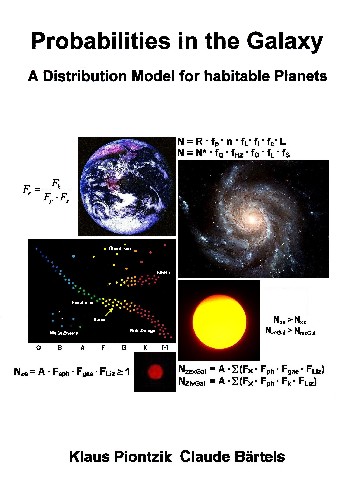| The maximum number of
civilizations in the galaxy results from the number of
intelligent species. And that's when all the intelligent
species would have made it to civilization. Drake-corrected special basic model According to theorem 9.7.2, the number of solar-like star systems in the galaxy, with an "Earth 2" in habitable zones inhabited by intelligent species, is 49-442 systems. Seager-corrected special basic model According to theorem 11.3.2, the number of solar-like star systems in the galaxy, with an "Earth 2" in habitable zone inhabited by intelligent species, is 77 - 742 systems.
|

|
176 sides, of them 64 in Color 76 pictures 11 tables Production and publishing: Books on Demand GmbH, Norderstedt ISBN 9-783-7528-5524-1 Price: 22 Euro |
|